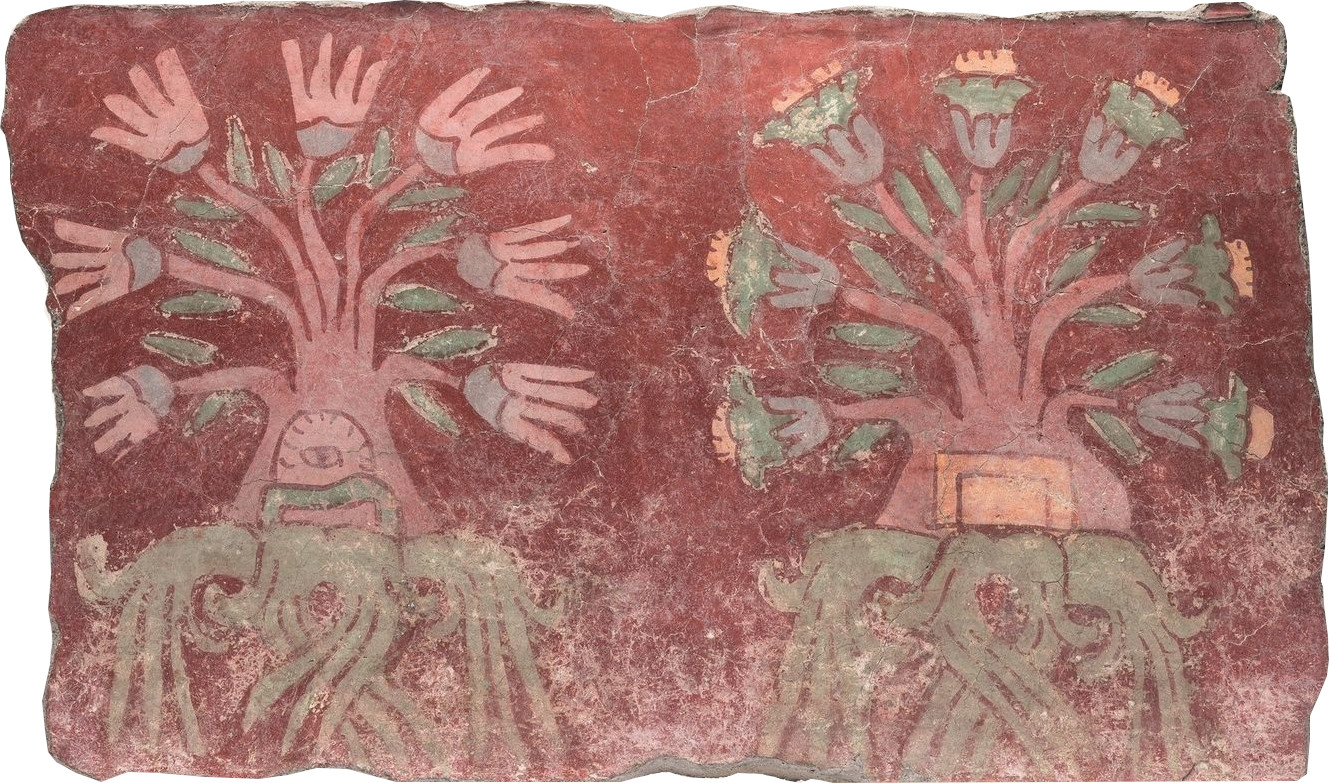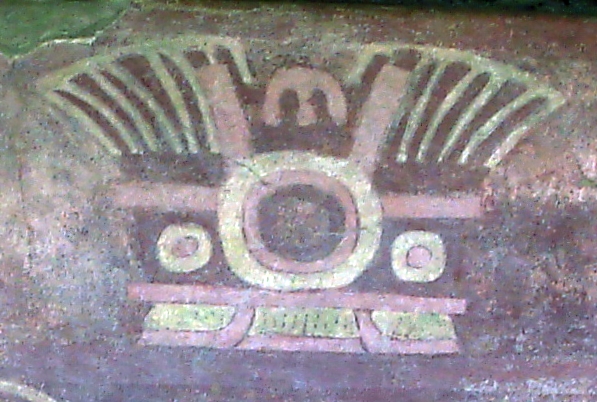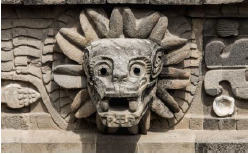Ancient Psychedelia: Alien Gods & Mushroom Goddesses
Online Book - Chapter 19, Page 368
Back to Online Book Mainpage / Next Page (Chapter 19, Page 369)
The style of dress on the Holy Child from the earliest images we have is representative of late 17th century European which led Wasson to conclude the changeover from the holy child to the Virgin Mary occurred somewhere around that time. (31) By 1617, the native Mexican people had an understanding of Jesus in relation to their holy child, who was likely a peyote or mushroom child deity and by 1692, their native entheogen worship had become Santa Rosa Maria. (32) (75b) Detail from Feathered Serpent and Flowering Trees Mural  (75a) Headress with central mirror from a mural at Teotihuacan, Mexico  (75e) Pyramid of Quetzalcoatl (feathered serpent) Teōtīhuacān The ancient Mesoamerican city of Teotihuacan is estimated to have been built around 100 BC (75a, b, e). The inhabitants were Nahuatle speaking Aztecs. The city fell originally around 550 AD, at which time it was named Teotihuacan which translates to “Birthplace of the gods” or “Place where the gods were born.” Early construction at Teotihuacan dates to about 200 BC. The largest pyramid, the |
Pyramid of the Sun, was completed by 100 AD. (33) Teotihuacan was built with no fortifications or military structures therefore it appears that the Aztecs were not the warring tribe they have been made out to be by Europeans and Americans over the centuries. Once again, we see another example of a tribe of people in harmony with nature and their surroundings and not a single paved road or streetlight, or city transit system. Similar to Gandhara and Egypt, Teotihuacan was a cultural center of the Mexican people prior to the Spanish conquest. (34) In Diego Duran’s book, Aztecs: The History of the Indies of New Spain, at one point he is describing a celebration following the coronation of the sovereign Tizoc in 1481 and reports: “And all the lords and grandees of the provinces rose and, to solemnize further the festivities, they all ate of some woodland mushrooms, which they say make you lose your sense, and thus they sallied forth all primed for dance.” (35) Of particular interest to our investigation on the subject of human sacrifice is an account rendered in Duran’s book, documenting the coronation of Moctezuma, where the lords of the enemy states were invited to the festivities and their acceptance of the invitations. According to the account they were to have witnessed the sacrifice on a pyramid, of one of their kin who had been captured during a past war. In the book, Wondrous Mushroom, Wasson points out that this appears to have been mostly ceremonial, since Moctezuma had sent the “enemy” delegations home with jewels and other presents along with escorts for their protection against warring tribes. Afterwards he suggests though, that maybe courage and the respect given to it were what enabled the victims to withstand the sacrifices. I now consider Wasson a human sacrifice apologist. (36) It was recorded by Duran that three times a year, they would invite their neighboring tribes for celebrations. One called the Feast of the Lord, another, the Feast of the Flag and the final one would have all kinds of mushroom consumption and it was called the “Feast of the Revelations.” (37) According to Wasson, Dibble and Anderson’s translation of Bernardino de Sahagun’s book, The General History of the Things of New Spain has an English interpretation which reveal mushroom use that do not occur in the Spanish rendering and further states that they appear to be given by the same informants. (38) Censorship occurs in all sorts of ways. (31) ibid, p. 141-43 (32) ibid, p. 145 (33) Millon, René (1993). "The Place Where Time Began: An Archaeologist's Interpretation of What Happened in Teotihuacan History". In Berrin, Kathleen; Esther Pasztory. Teotihuacan: Art from the City of the Gods. New York: Thames and Hudson. pp. 16–43 (34) Wondrous Mushroom, p. 153, 173 (35) ibid, p. 200 (36) ibid, 202-03 (37) ibid, p. 204 (38) Wondrous Mushroom, p. 207 |
Go Back to Page 367